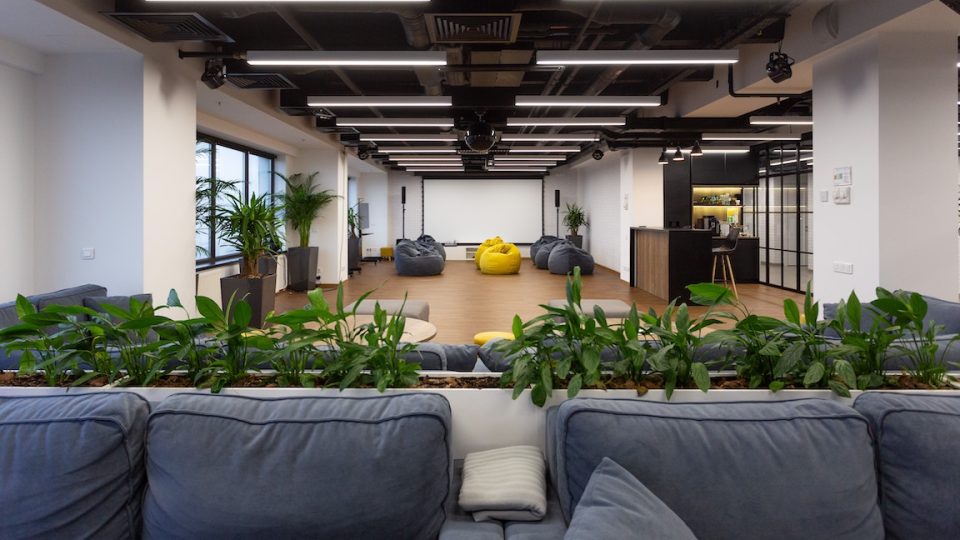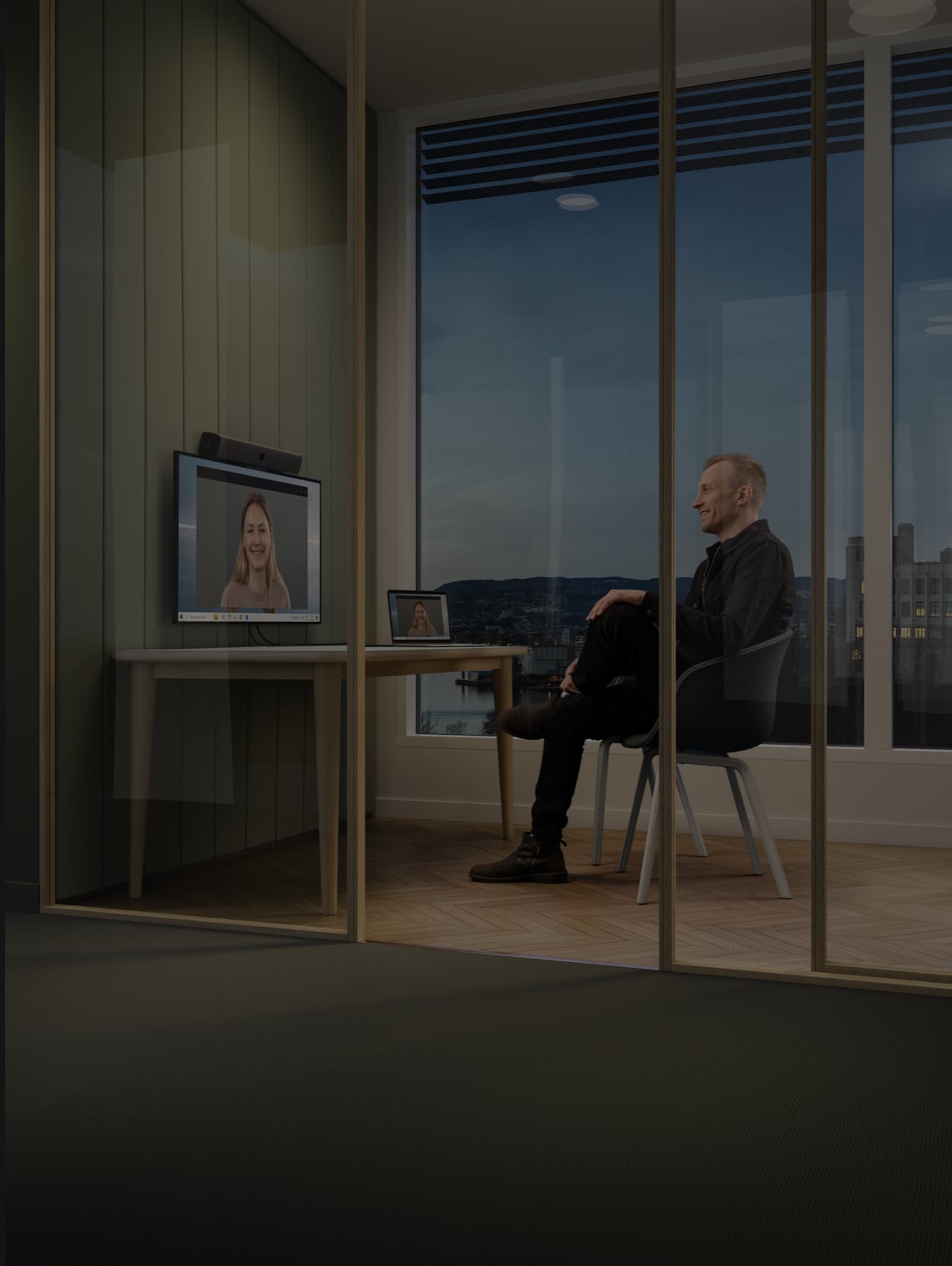11 Tips for Choosing the Right All-in-One Video Conference System
Hayley Spooner, Jun 29, 2023

An all-in-one video conference system gives you everything you need to start video conferencing in one package. Use these tips to choose a system that meets your expectations and gives you the most value for your investment.
Key Highlights:
- An all-in-one video conference system should support the total number of participants that may need to meet at any given time.
- Additional considerations include audio and video quality, device and app compatibility, security, technical support and security protocols.
- Portable solutions offer more value for your investment by having the ability to be used in multiple spaces as business needs change.
- Think about your current needs while anticipating future needs to ensure your video conference system will serve you over time.
- Neat simplifies video conferencing with all-in-one devices that cater to every user’s experience.
1. Consider Your Business Needs
You might need a system where any employee can schedule meetings as needed. Or you might outfit all of your executives’ offices with personal video conferencing devices.
Start exploring your video conferencing options by defining your business needs. Some questions you might ask include:
- How many people will be participating in video conferences, both on-site and remotely?
- What types of meetings will you host (e.g., small teams, one-to-one meetings)?
- How often will you conduct video conferences?
- How much will your budget allow you to spend?
- How much physical space do you have to dedicate to video conferencing systems (e.g., entire rooms, desktop space, a small corner of an open office)?
Answering these questions can guide you to the right types of conferencing systems. For example, personal devices like Neat Frame make sense for one-on-one meetings. Multi-person meetings would benefit from larger solutions like Neat Bar or Neat Board. Frequent meetings could justify purchasing multiple all-in-one systems.

2. Pay Attention to Video and Audio Quality
You need both audio and video to have productive meetings, and the quality of each can be the difference between positive outcomes or wasted time.
Clear, crisp sound ensures effective communication between participants, especially in group discussions. A system with noise reduction and echo cancellation improves the overall experience by eliminating distracting background noises.
High-definition cameras allow participants to see each other clearly, making it easier to read body language and facial expressions. A resolution of 720p is common for video conferencing cameras, but 1080p and 4K offer sharper image quality.
Also, consider the camera’s field of view. Many cameras allow you to set your field of view according to how many participants are in the room. A 57° field of view works well for long, narrow rooms. It also creates a 1:1 ratio (almost) between the distance from the camera to the width of the camera’s viewing area. For example, if the camera is one foot away from the speaker, the field of view is about 1.1 feet. A 120° field of view captures about 3.4 feet of viewing space per foot from the camera. These wide-angle cameras are ideal for huddle rooms and multi-person meetings. Neat’s cameras automatically adjust the field of view to perfectly frame all participants while eliminating background distractions or non-participants.
3. Review Compatibility and Integration
Compatibility refers to how well the video conferencing system works with other devices or software. For example, some dedicated video conference rooms use proprietary software designed to work with the video room equipment. Users might be unable to participate in meetings without technical restrictions, such as the ability to connect their own devices or initiate meetings if they’re not on site.
A good system should integrate seamlessly with other tools you use every day, like email, calendars or project management software. Having the right integrations can save time and increase productivity.
4. Consider the Ease of Use and Setup
One of the inherent benefits of an all-in-one video conference system is having everything you need in a single solution. This should simplify installation, but you also want to consider how an integrated solution contributes to the user experience and device connectivity compared to a non-integrated solution.
You’ll need to add each system to your network, which might require the help of your IT team. Users also need to be able to use the system, so consider the user interface and the steps to prepare the system for each meeting.
Neat devices are designed for simple setup out of the box and can launch meetings with the touch of a button. Intuitive interfaces shorten the learning curve so everyone can benefit from your new video conferencing systems.
5. Ask About Technical Support and Assistance
Technical difficulties are common during virtual meetings. A poor-quality connection or audio issues can disrupt communication and hinder productivity. Having reliable technical support ensures any problems will be resolved quickly and efficiently to keep meetings on track.
Ask whether technical support is available and how to obtain it. For example, support might come in the form of self-help guides and videos or live chat and phone support. Make sure you’re comfortable with those options before investing in a video conference system.
6. Investigate Security and Privacy Protocols
With sensitive data being shared during video conferences, your all-in-one system should provide security and privacy for all users.
Many companies store sensitive data on their servers or cloud platforms. It’s vital to choose a system that uses encryption to protect data from unauthorized access. Users should implement two-factor authentication and password protection to secure their accounts.
Also, review the system’s privacy policy to see how personal information is collected and used. The vendor’s privacy policy should align with your organization’s data protection requirements. If your business deals with sensitive data, such as financial or healthcare information, make sure you select a vendor that complies with industry standards like HIPAA or GDPR.
7. Consider Mobility and Portability
With more people working remotely or on the go, the ability to participate in meetings from anywhere at any time has become crucial. A video conferencing system that offers mobility and portability can provide a significant advantage for businesses that require their employees to be constantly connected.
All-in-one systems can be fixed or portable, depending on factors like size, weight, battery life and connectivity. For example, Neat Frame is small enough to remain on a desktop and light enough to be carried to various locations. Neat Board is larger in size but can be installed on wheels to improve portability. Wireless connectivity with all of Neat’s devices gives you more places to use them.
8. Test the Recording and Sharing Features
Recording and sharing features are usually part of the video conferencing software, not the hardware. However, the right hardware system can enable better sharing to improve collaboration and meeting outcomes.
For starters, consider the recording quality and format. Playback is only helpful if you can easily see the content you captured. Glitchy or grainy visuals aren’t helpful, especially if you’re sharing the recording with people who weren’t at the meeting.
You should also be able to easily save and share recordings. Meetings might be saved locally or can be stored on cloud storage or shared drives (like Google Drive).
Neat’s App Hub integrates with multiple apps (think Miro, Slack, YouTube, and more) that can be brought into on your Zoom or Microsoft Teams meetings via Neat share. This allows users to bring their entire workspace into the meeting to seamlessly share and save ideas, documents and other content.
Neat Board also brings the whiteboard experience into your video meetings. Users have another way to collaborate directly in the meeting. The infinite canvas lets you capture every idea. Share it after the meeting, then pick up where you left off when it’s time to meet again.
9. Explore Customization and Branding Options
Customizing your video conferences allows you to tailor the experience to better align with your brand identity. This includes customizing backgrounds, logos, colors, fonts and other visual elements meeting participants might see. It creates a sense of familiarity among attendees who may be seeing the company’s branding for the first time. Plus, it leaves a lasting impression on attendees.
10. Read Online Reviews and Recommendations
Online reviews offer insight into others’ experiences. They help you make an informed decision by providing information about features, ease of use, customer support and overall performance.
You can also ask for recommendations from colleagues or industry peers. They can provide firsthand accounts of how a particular system works in real-world situations.
11. Don’t Forget About Future Proofing and Upgrades
The all-in-one video conference system you choose today can potentially serve you many years from now. Even as technology evolves and new solutions become available, you can ensure scalability and compatibility with future technologies.
Ask about upgrade options if new hardware becomes available. Software updates should also be available to improve your system and stay up-to-date with the latest security protocols.
One option to ensure access to the latest technology and features is to try Neat as a Service. Low, predictable costs allow you to avoid the hassle of making full-scale investments. You can upgrade your technology as new solutions become available or scale your technology as needed.
How Neat Simplifies All-in-One Video Conference Systems
An all-in-one video conference system can make life easier. It eliminates the need to purchase multiple pieces of equipment and software since it includes everything you need in one package. This not only saves time, but also reduces the expense of buying individual components. It also makes for easier setup, as most systems are plug-and-play—just connect them to your network, sign in to your video conferencing platform and start your meeting.
Neat supports a simplified video conferencing experience with our all-in-one solutions for home offices, conference rooms, video conferencing kiosks and everything in between. We design our components to work together and provide crystal-clear audio and video no matter where or how you meet.
Get everything you need to install and connect your device and join your first meeting in a matter of minutes. Explore Neat devices and enjoy a better video conferencing experience.
Sources:
Buying Guide: Comparing Field of View When Buying a Conference Room Video Camera. Video Conference Gear.
Video Conferencing Equipment: The All-in-One Guide to The Perfect Setup. Whereby.
What is field of view (FOV)? Tech Target.
Videoconferencing Standards. DIR Texas.
How to Choose the Best Video Conferencing Provider 2020. UC Today.




